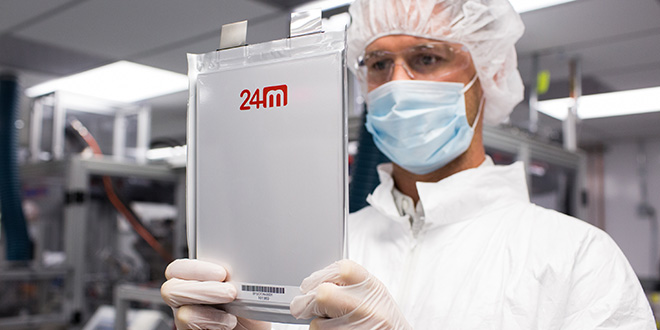Startup 24M has emerged from stealth mode to introduce its semisolid lithium-ion cell, which the company claims will deliver improved performance at half the cost of current Li-ion batteries.
“The lithium-ion battery is a brilliant, enabling technology, but its economics are flawed. It’s prohibitively expensive; it’s cumbersome and inefficient to make; and today’s version is approaching the limits of its cost reductions,†said Dr. Yet-Ming Chiang, 24M’s Chief Scientist. “24M has fixed the flaws. We’ve made the world’s favorite battery better, fundamentally changing its cost curve by designing a more elegant and simpler cell and then making the batteries the right way – the way they should have been made from day one.â€
24M’s cell design is based on a semisolid thick electrode that Dr. Chiang and his colleagues developed at MIT. Conventional Li-ion battery cells have a large proportion of inactive, non-charge carrying materials – supporting metals and plastics that are layered within a cell’s casing. The semisolid thick electrode allows 24M to eliminate more than 80% of these materials and increase the active layer thickness by up to five times.
The simplicity of the cell design allows a simplified manufacturing process that requires no binding, drying, solvent recovery or calendaring. According to 24M, its cells can be built in a fifth the time of conventional cells and, thanks to the solvent-free manufacturing platform, are the most easily recycled lithium-ion cells ever made.
“We give the architects of our energy future everything they love about lithium-ion at a cost they love too,†said Throop Wilder, 24M’s CEO. “Together, our inventions achieve what lithium-ion has yet to do – meet the ultra-low cost targets of the grid and transportation industries. By 2020 our battery costs will be less than $100 per kWh.â€
Since its founding in 2010, 24M has raised $50 million in private capital, and received a $4.5 million grant from the DOE. 24M’s cells are currently undergoing customer trials with integrators of power systems for the grid.
Source: ChargedEVs


